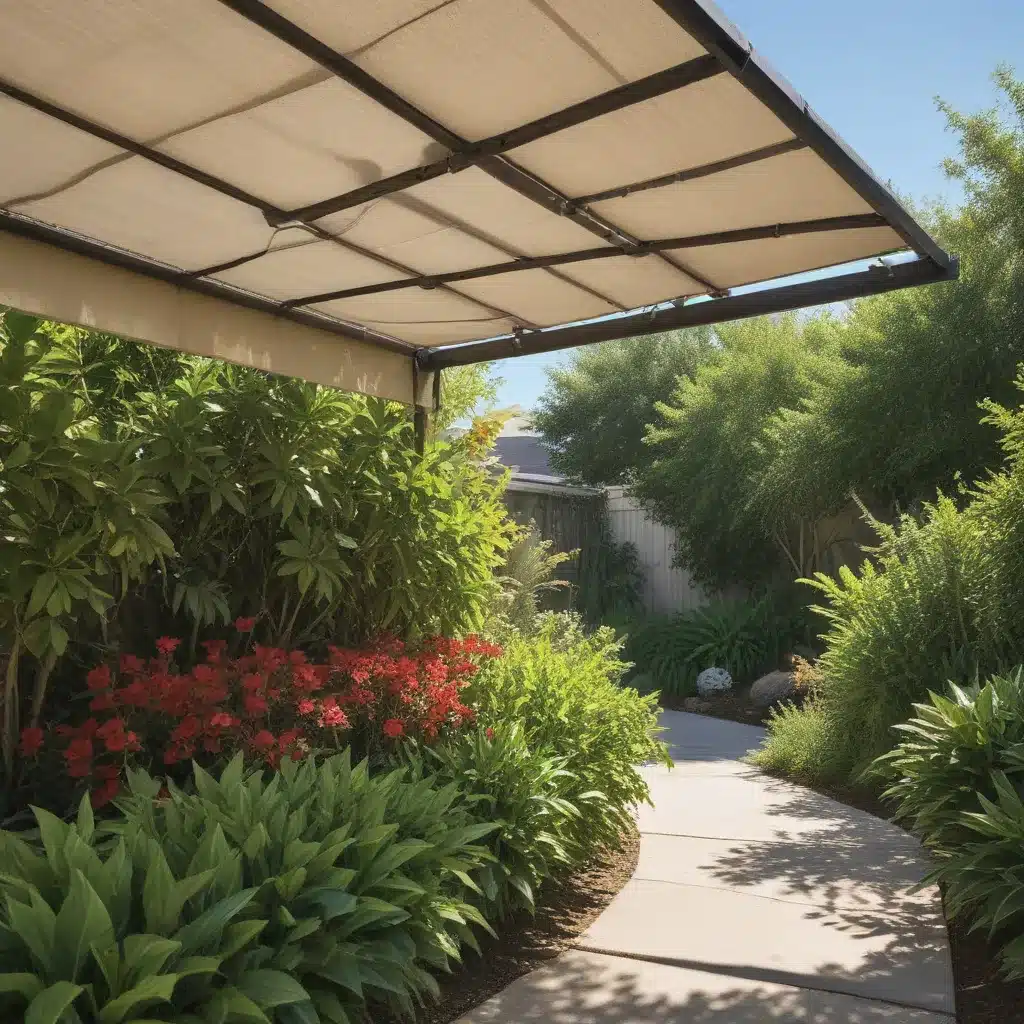Beating the Heat in Temecula’s Sunny Paradise
As a landscape designer and gardener living in the Temecula Valley, I’ve learned a thing or two about battling the relentless sun. It’s no easy feat, let me tell you! But with a bit of creativity and the right plant choices, you can transform even the hottest, sunniest outdoor space into a cool, lush oasis.
You see, I once had a client – let’s call her Mary – who was in a similar predicament. Her backyard patio was a sun-drenched cement slab, surrounded by walls that amplified the heat. Poor Mary struggled to keep anything alive out there, no matter how diligently she watered. Cactus and succulents were about the only plants that stood a chance. But Mary didn’t want a desert landscape – she craved lush greenery and vibrant flowers to make her patio feel like a true extension of her home.
Finding the Right Plants for the Job
Now, as a self-proclaimed “veggie gardening guru,” I’ll admit that ornamentals weren’t exactly my forte. But I was determined to help Mary create the backyard oasis she desired. After doing some research and tapping into the wealth of knowledge on r/SoCalGardening, I came up with a game plan.
First and foremost, I knew we needed to focus on plants that could withstand intense sun and heat, while also thriving in the shallow planter boxes Mary had. Flowering, cascading, and vining varieties were top of the list, as they’d add that lush, wonderland feel Mary was after. Herbs like rosemary, thyme, and native sages were obvious choices, as they’re tough as nails and offer the added bonus of aromatic foliage.
I also suggested plants like black-eyed Susans, Thunbergia (also known as “clock vine” or “black-eyed Susan vine”), lavender, and borage. These beauties would spill over the planter edges, creating a cascading effect that softens the hard edges of the patio. And the best part? They’re all relatively low-maintenance, so Mary wouldn’t have to worry about constantly babysitting them.
Harnessing the Power of Shade
Of course, plant selection was only half the battle. We also needed to tackle the issue of relentless sun exposure. That’s where shade solutions came into play.
As the EPA notes, trees, green roofs, and other vegetation can be incredibly effective at reducing urban heat island effects. So I recommended that Mary consider adding some strategically placed shade trees or trellises to her patio. This would not only create cool, comfortable spots for her to relax, but it would also help protect her carefully selected plants from the scorching sun.
Now, I know what you’re thinking – “But wait, won’t those shade structures block the sunlight my plants need?” Excellent question! That’s where sun mapping comes into play. As Koren Helbig explains, taking the time to understand the sun’s patterns throughout the year can help you figure out the best placement for both your plants and your shade structures.
By mapping out the sun’s path and the resulting shade patterns in Mary’s backyard, we were able to identify the perfect spots for her veggie beds (where they’d get maximum sun) and her seating areas (where strategically placed shade structures would keep things cool and comfortable).
Putting it All Together
With our plan in place, Mary and I got to work transforming her once-barren patio into a lush, vibrant oasis. We started by adding a few key shade structures – a trellis along the back wall and a couple of carefully positioned trees in the corners. This immediately created cool, shady spots for her to enjoy.
Next, we got down to business with the planting. We filled the fence-line planters with our carefully selected sun-loving, drought-tolerant beauties, arranging them to create a cascading, overflowing effect. The rosemary, thyme, and sages quickly got to work, filling the air with their soothing aromas. And the black-eyed Susans, Thunbergia, and borage burst into bloom, adding pops of color that danced in the breeze.
The final touch was a set of self-watering stakes, which would help ensure Mary’s plants stayed hydrated even when she was away from home. With everything in place, Mary’s once-neglected patio had been reborn as a true oasis – a lush, shady retreat where she could unwind and escape the Temecula heat.
A Lesson in Beating the Heat
Of course, Mary’s story is just one example of how you can transform a sun-baked outdoor space into a cool, comfortable haven. Whether you’re in Temecula, California or any other hot, inland climate, the key is to approach the challenge with a little creativity and a lot of knowledge.
Start by understanding your site’s sun exposure through the seasons, using tools like sun mapping. Then, choose plants that can thrive in those conditions, prioritizing drought-tolerant, sun-loving varieties. And don’t forget the power of shade – strategic placement of trees, trellises, and other structures can make all the difference in keeping your garden cool and comfortable.
At the end of the day, with a little planning and the right approach, you can turn even the hottest, most sun-drenched outdoor space into a lush, inviting oasis. And who knows – you might just inspire your neighbors to do the same, helping to reduce the urban heat island effect in your community.
So why not head over to A1 Landscape Construction and let’s start planning your own backyard paradise? I promise, with a little know-how, you’ll be enjoying the sweet, shady life in no time.




